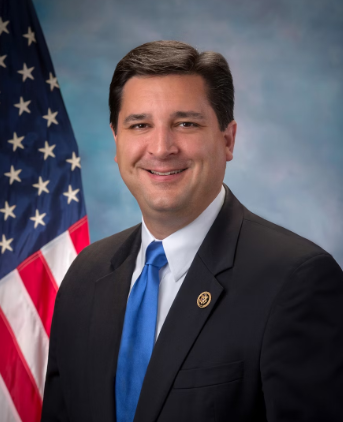Rep. Rouzer, Vilsack spar over poultry line speed study

Rep. Rouzer, Vilsack spar over poultry line speed study
By Roy Graber
Rep. David Rouzer, R-North Carolina, expressed worries to U.S. Secretary of Agriculture Tom Vilsack that a study concerning poultry plant line speeds appears to be biased against the poultry industry.

Rep. David Rouzer (Official U.S. House of Representatives photo)
The exchange between the two federal officials took place during a recent House Agriculture Committee hearing. The hearing can be viewed on YouTube.
Rouzer told the secretary he thought it had been proven that poultry plant evisceration lines could safely operate at speeds of up to 175 birds per minute, so he questioned why the matter is being studied.
“Chicken plants across the country have been operating at higher speeds for more than 25 years through the FSIS line speed waivers, as you well know. Under President (Bill) Clinton, a study allowed 20 poultry plants to operate eviscerations lines up to 175 birds a minute. Plants invested, therefore, millions in technology through their partner farms to supply the poultry needed and maintain worker safety and inspection standards all the same. Now, these positive pilot results led to the new poultry inspection system. Today, 47 plants operate under the system. Farms all across North Carolina have built operations to support increased capacity and plants have designed staffing and facility needs around these speeds,” Rouzer said.
Rouzer also pointed out that data from the U.S. Occupational Safety and Health Administration (OSHA) showed that even with higher line speeds, illnesses and injuries among plant workers were down 91%, which Rouzer said was “evidence that faster line speeds don’t compromise worker safety.”
Rouzer told Vilsack that in 2020, a proposed rule incentivized more poultry plants to “adopt these improved processes and new technologies while increasing speeds. That rule was proposed during a Republican administration and Sonny Perdue’s tenure as agriculture secretary.
But the present administration repealed that rule, Rouzer said.
“Instead, your agency informed companies with line speed waivers that (in order to) keep them, they were required to ‘opt in’ to a study on worker safety being conducted outside of the agency.
Is the study objective?
Rouzer told Vilsack he was not only concerned about whether the study was necessary, but also whether it was unbiased.
According to Rouzer, the people to conduct a study were not chosen through a bidding process, but instead it was a “sole source contract.”
Just who is conducting the study is particularly concerning to Rouzer.
“No member of the study team is from a land grant institution with knowledge of the chicken industry, but instead are associates of the University of California system. Now, a member of that study team testified in front of OSHA against a company participating in the study, and has vocally critiqued a number of other plants. Considering the work of other team members and the information requested before each plant visit that far exceeds the scope of the study, there’s a clear bias against the industry, and leads any objective observer to the conclusion that this is a gotcha operation,” Rozer said.
Vilsack defended the USDA’s actions, saying that participation was voluntary and not forced.
“They had the choice, and these plants chose to participate in this study,” Vilsack said.
But Rouzer pushed back, saying the management of those plants did choose to take part in the study “in good faith and it’s turned into something that they didn’t anticipate.”
Vilsack asked Rouzer if it was proper to prejudge the study before learning of its results.
“This is a process of trying to make sure that we get the right data, the significant data to be able to support whether the (higher line speeds led to higher injury rates.) If they’re not, then obviously line speeds are going to continue. If they are, then there’s going to have to be some adjustment, but we just don’t have all the data we need, and that’s the reason why we have entered into an agreement with the producers,” Vilsack said.
Prior to when Vilsack made those comments, Rouzer asked him if he would be willing to submit in writing a summary of how much money was being spent on the study, the source of the funding, how the team members were selected, and why all study participants were associated with the University of California system.
Vilsack said he would be “happy to answer questions,” but also noted that there is present litigation concerning poultry plant line speeds that is “driving a lot of this effort.” He indicated that “issues of race concerning worker safety” are playing a role in the litigation and the discussion.
